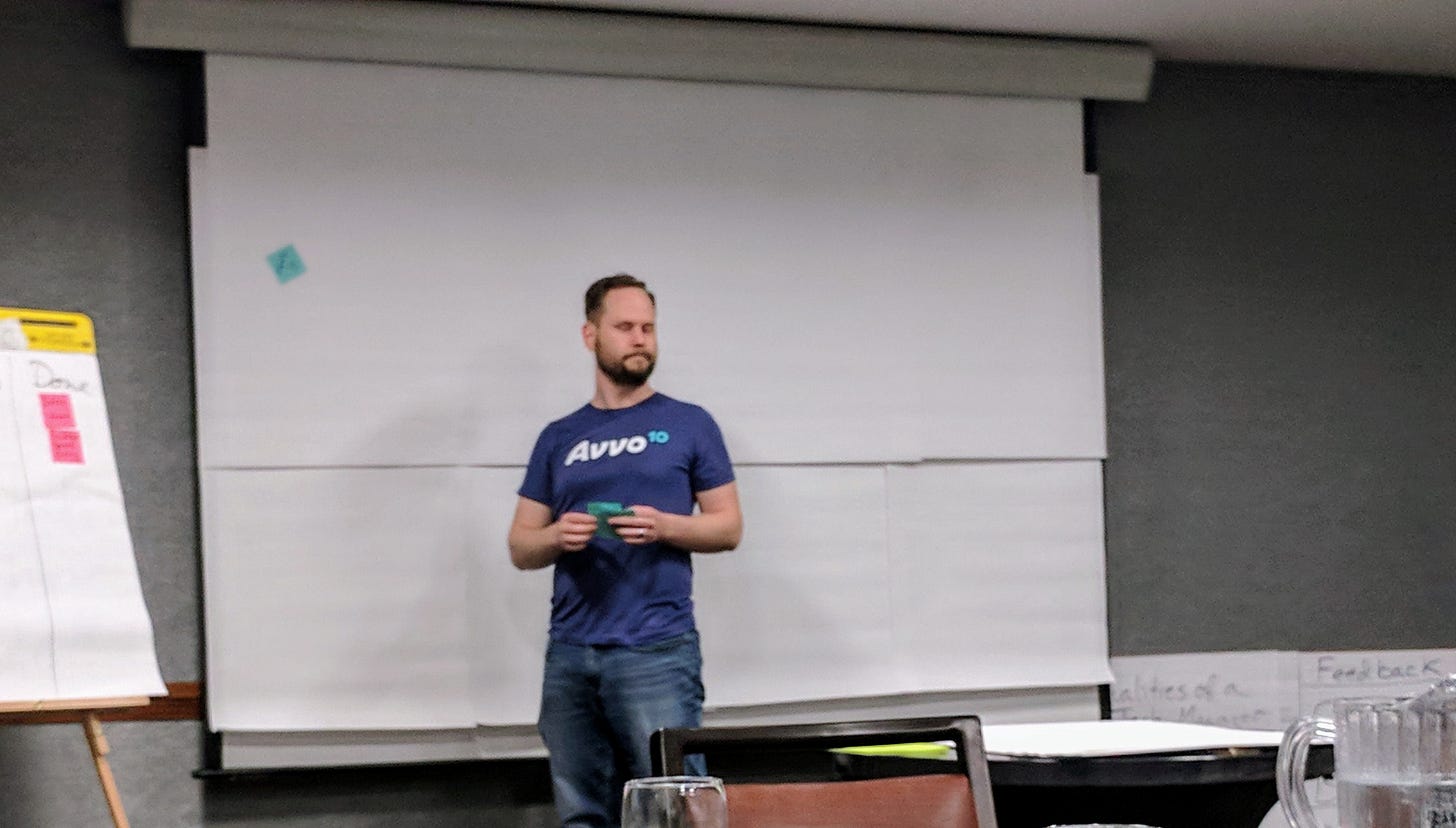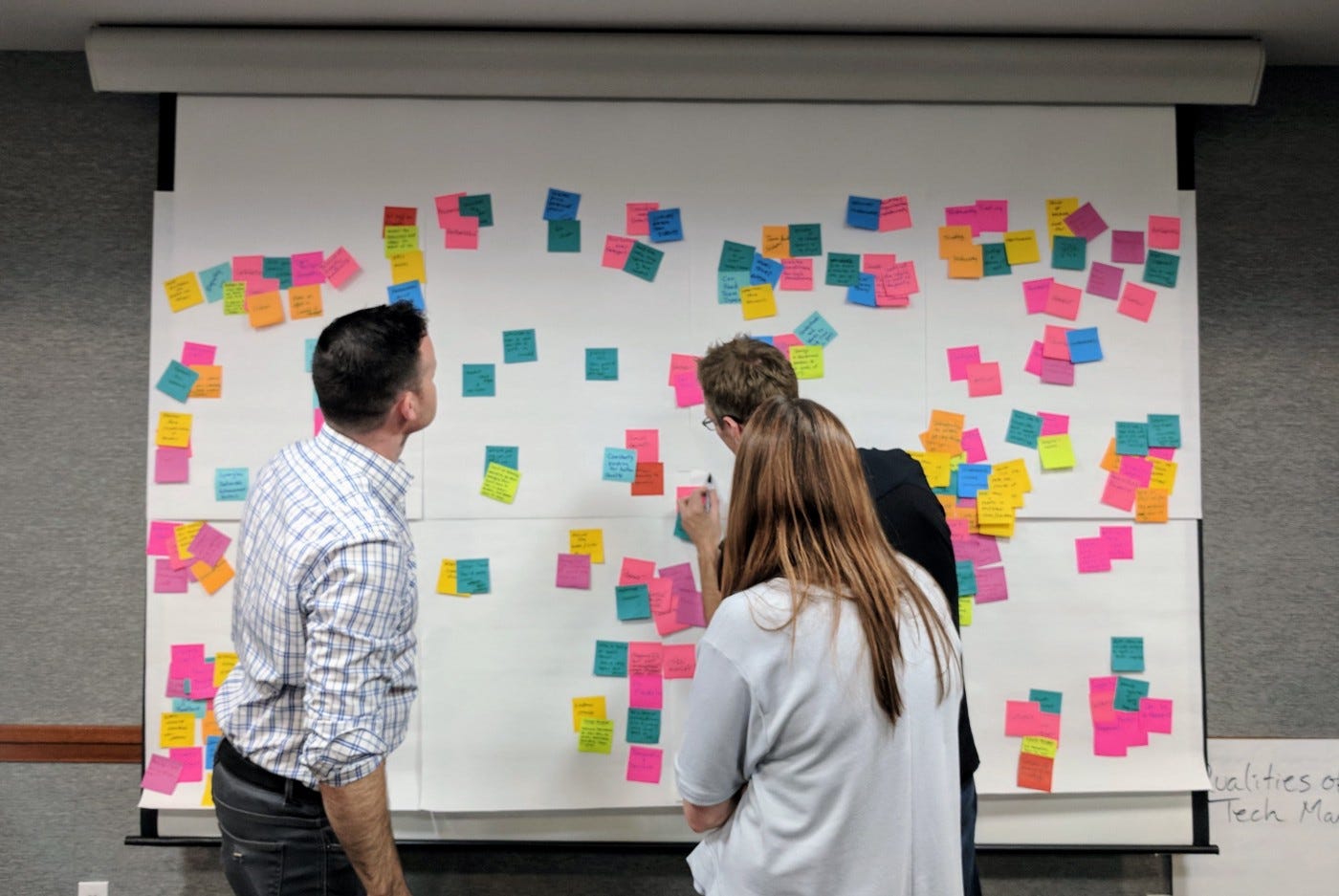Building a Management Training Curriculum at Avvo
Awrite! ("hello" in New Orleans)
I'm writing this week from New Orleans, LA, where we've been gathering as a company (we're fully distributed), and I'm leading an offsite for the technology managers (more on that later).
First, the massive news this week is that my book's electronic, audiobook, and print versions are now available! I've been so heartened to have people all over the world share pictures of their copies with me. I appreciate the support from all of you! If you still need to order your copy, why wait? If you want a sense of what you'll be reading (or hearing), this newsletter and the podcast give you a preview. Please share/rate/review any and all of these things!
You can always find links to everything at https://itdependsbook.net/
Other big news this week is that my conversation with Etienne De Bruin (of 7CTOs and CTO Levels fame) on the "CTO Podcast" is now available at https://pca.st/efsdd5lh or wherever you get your podcasts.
As always, a reminder. If you want me to answer a technology management question, write me! contact@itdependsbook.net
About this chapter
This week, I'm sharing the chapter "Building a Management Training Curriculum at Avvo." This chapter describes the process we used at Avvo (stolen from some friends at Spotify) to figure out what areas we needed to focus on to improve ourselves as managers. We used a similar process at Spotify and Onfido. It works really well. I continue to adapt it, but the core is the same.
I'm sharing this chapter because I planned to run the exercise again with our technology managers at DistroKid this week. Unfortunately, something else came up that we needed to focus on as a group. We'll do it soon (probably virtually). It leads to great conversations and reflections specific to the people in the room. Often, the conversation is more valuable than the output (although the output is valuable as well!).
If you are a director, VP, or CTO, consider trying this process out with the leads and managers on your team. If you are a lead or manager in an organization and think your peers and boss could approach this process with curiosity and openness, pitch it to your boss! Either way, let me know how it goes…
Building a Management Training Curriculum at Avvo
Originally published on October 5, 2017
This week, we kicked off manager training for Avvo technology managers. Before building a curriculum, we needed to decide what was essential to learn and where we as a group needed the most development.
If I had done this with my organization at Adobe years ago, I might have made a list of capabilities or requirements for our roles and then assessed each person against those requirements. I’ve since learned that the top-down approach tends to isolate and alienate people. It is something done TO them. They don’t feel investment or ownership of the process. If they disagree with the list or my assessment of them, it is hard to challenge due to the nature of the process.
At Spotify, I worked with Paolo Brolin Echeverria and Mats Oldin to build manager training for my Tribe. They developed an excellent kick-off exercise that I repurposed for my team at Avvo.
The process is straightforward.
We began by individually thinking about the qualities of a good leader in our organization. We each wrote every important quality we could think of onto individual post-its. This effort took about 20 minutes. Then, one by one, we put each of our post-its onto a large board. As we placed each quality, we explained why we believed it was important for a leader at Avvo.
Figure 25 – Kyle Adding Post-Its
When we finished putting all our post-its on the board, we affinity-grouped them. Affinity-grouping resulted in 30 groups of similar qualities and a few individual post-its that did not fit into any group. The grouping process required much more discussion so that we could all agree on the final groupings.
Figure 26 - Nic, Ian, and Jordan working on cleaning up the affinity groups
At this point, we had collectively described 30 essential qualities of a leader at Avvo, which is far too many to focus on effectively. To narrow things down, we each received six votes to put towards any group of qualities we felt were the most critical. Then, we tallied the votes and took the top eight as our core qualities of a manager at Avvo.
The voting process also led to many valuable discussions as we saw where we had voted as a group. Were these the right eight qualities? Were they the most significant eight?
The eight qualities that we picked were:
empathy
develops autonomy
builds good teams
is real and trustworthy
is a big-picture thinker
supports mastery
gives feedback
has a bias for action
Figure 27 - Dot voting in progress
Individually, we then assessed ourselves against the eight core qualities on a three-point scale: “I need training on this,” “need training, but it can wait,” and “I can train others on this.” One by one, we went up to a board with the eight qualities mapped on a spider graph. We put dots on a line for each quality where we rated ourselves. We explained why we chose that assessment. This exercise led to a further discussion about assessing ourselves against these qualities.
Figure 28 - Our collective spider graph
The group found this exercise to be very valuable. We had excellent discussions on what it means to be a good leader at our company, including the values we agree on and those we don’t. We also prioritized the values collectively so that everyone feels ownership and allegiance to them.
And we came to an understanding of where we need to develop the most as a group. This mutual understanding will inform the curriculum for our management training — my original goal.
Thanks again! If this chapter was valuable to you, please share it with friends or co-workers!






